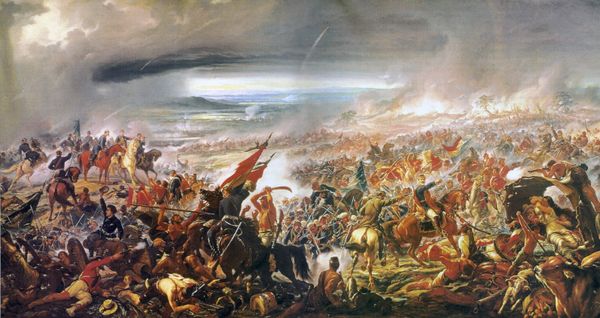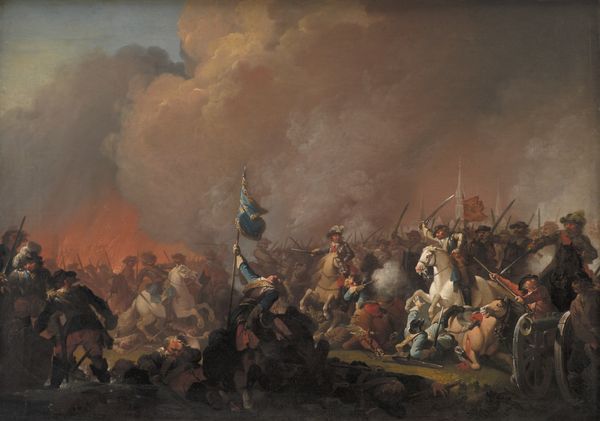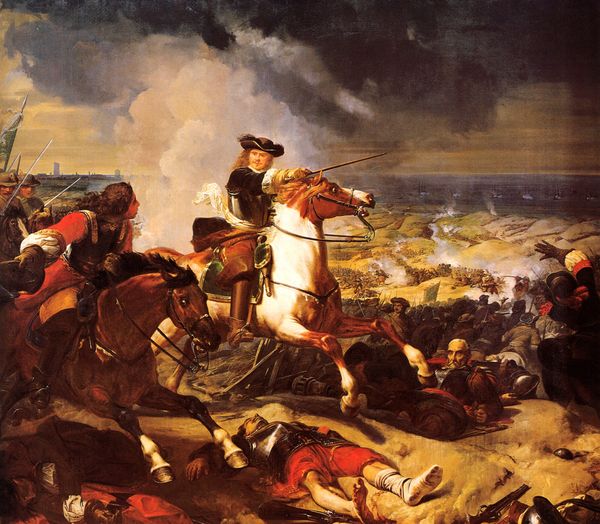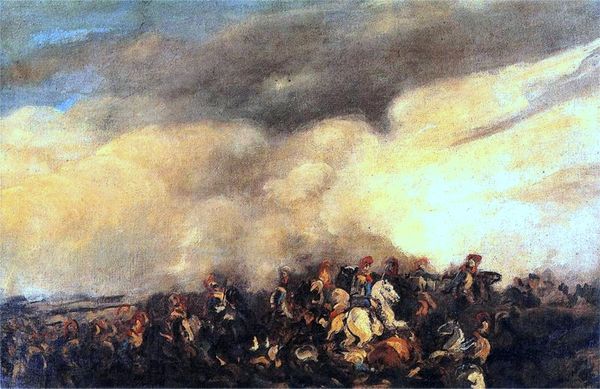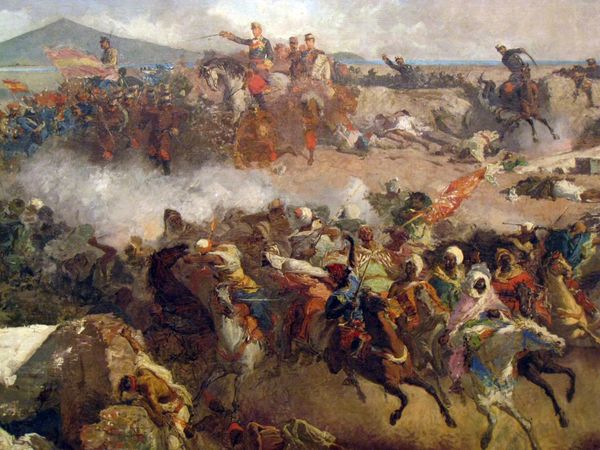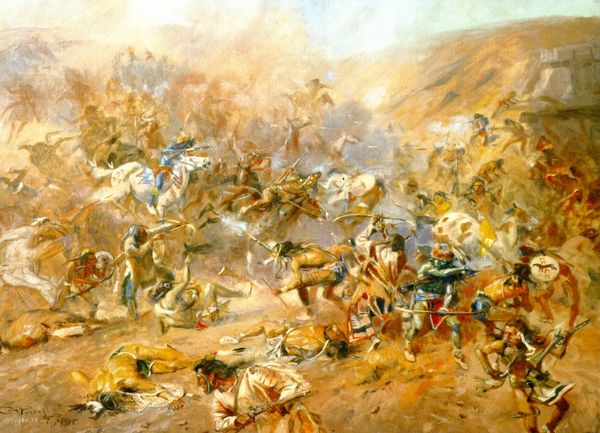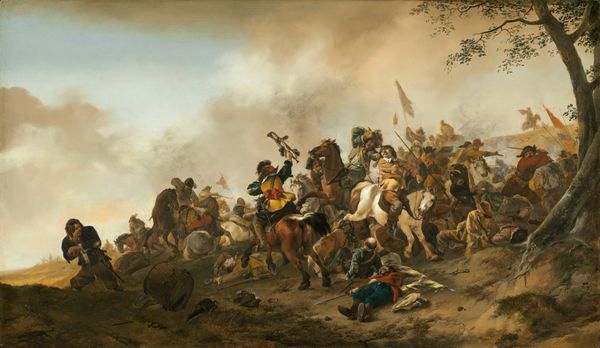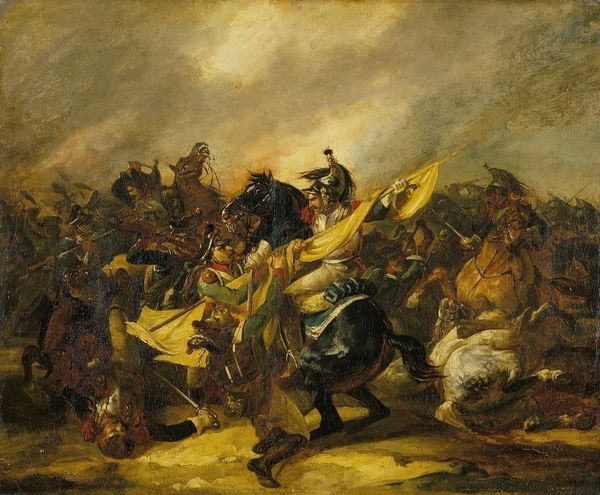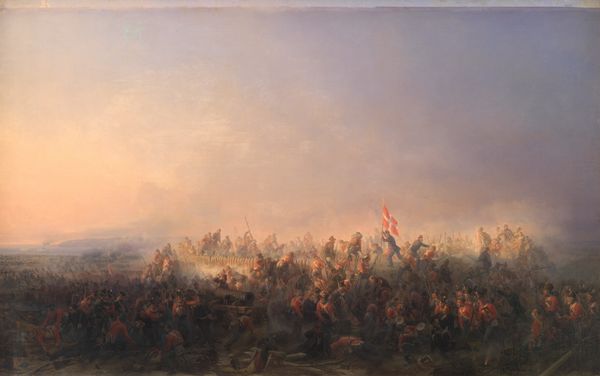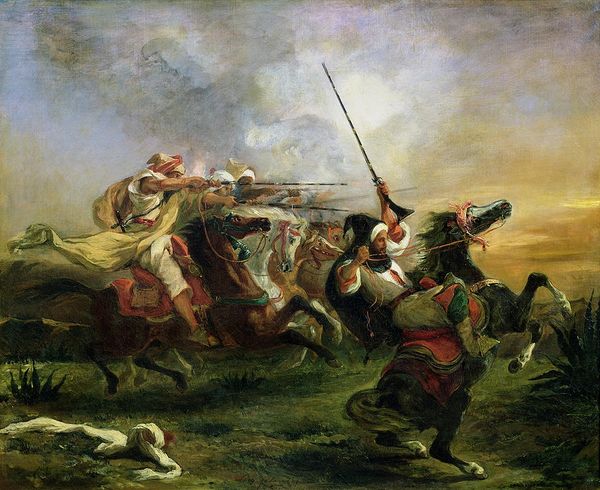
Copyright: Public domain
Editor: This is "The Battle of Nazareth," an oil painting created around 1801 by Antoine-Jean Gros, currently held at the Musée des Beaux-Arts de Nantes. I’m struck by the intensity, the chaotic energy swirling around in what seems like a blinding sandstorm. It’s really quite overwhelming. What do you see in this piece? Curator: Indeed, it is overwhelming, isn’t it? More than a literal depiction of warfare, I see it as a grand stage for the exploration of power and vulnerability. Note how Gros utilizes color – primarily fiery oranges and muted yellows – to amplify the psychological impact of conflict. These hues evoke feelings of heat, danger, and perhaps, the very dryness of the desert that breeds desperation. What memories might such imagery invoke? Editor: Hmm, that's an interesting angle. The idea of ‘memory’ relating to heat and dryness definitely rings true—linking the senses with past experiences. But how does the composition contribute to this sense of vulnerability that you mentioned? Curator: Observe how the figures are intertwined, almost dissolving into one another. There are few distinct heroes here, but rather a mass of bodies caught in the throes of combat. This lack of clear individual triumphs subverts the typical war narrative. Each soldier, regardless of their allegiance, seems equally vulnerable, consumed by the larger, merciless machinery of conflict. Notice too, the swirling composition, which disorients the viewer. Where is there peace in this work, a sign of stability or rest? Editor: There's none at all, is there? Now that you point it out, it does create an incredible sense of unease. I initially saw it as chaotic but now I see how that chaos conveys vulnerability in a truly poignant way. Thank you. Curator: My pleasure. Sometimes, the most compelling art leaves us not with answers, but with more profound questions.
Comments
No comments
Be the first to comment and join the conversation on the ultimate creative platform.

